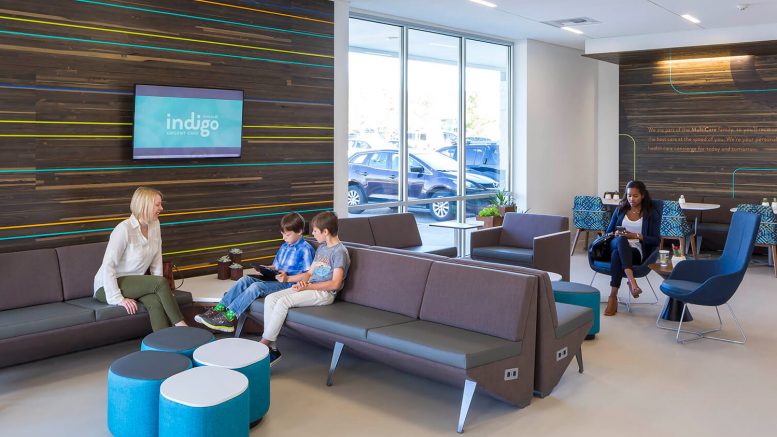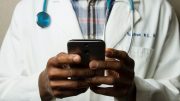Where do you go when your primary care doctor is too busy and the emergency room feels too extreme? When you’re sick or injured, an urgent care center is often the first place that comes to mind. These low-cost health options have become a great alternative when you’re in need of immediate medical attention. It’s no surprise that these walk-in clinics have become a staple in countless neighbourhoods throughout the United States.
In order to keep up with the rising number of patients, many urgent care clinics have invested in technology to streamline their practice. Whether that means relying on telehealth medicine or offering the best in medical equipment, technology has become an integral part of the medical experience.
Most urgent care centers provide X-rays, stitches, and basic blood testing for diseases and STIs, but as technology flourishes, patients want a more streamlined experience. For urgent care centers across the country, improving technology has been at the top of the to-do list.
So, how have urgent care clinics begun to utilize technology to their advantage? Here are some of the newest ways walk in clinics are helping their clients.
An emphasis on telehealth
Like most other medical facilities, telehealth medicine has taken urgent care centers by storm. This is primarily because of its wide range of uses. Not only can telehealth help doctors interact with patients across the country, but this technology can also allow patients to sign in on their own, make payments, and access important medical records.
This wide-reaching application can be used in varying degrees across health platforms. This is essential given that the number of people who utilize urgent care centers has more than doubled between 2008 and 2015 alone. Paying their bill or performing a follow-up visit from the comfort of their home means that patients are more comfortable throughout their experience.
One urgent care clinic, however, has taken this to the next level.
“Urgent care in general faces a lot of challenges with inconsistent wait times,” noted the director of the Deaconess Clinic Urgent Care, Andrew Schenk. “We’d have a location that would be very busy one day, and then we’d have another location within five miles that wouldn’t be busy.”
To help keep patient visits from bottlenecking, Deaconess has adopted new software that tracks patient wait-times in real-time. Before leaving your home, you can check the average wait and even reserve a spot in the online queue. That way, urgent care centers are achieving more consistent numbers while the patients know what to expect.
It’s estimated that up to 85% of adults have visited an urgent care clinic in the last year alone; investing in options that place your needs first is the best way to get quality care.
A streamlined approach
While most patients want to spend as little time at the doctor as they can, others want to see efficiency in different ways. Along with streamlining indoor operations, Millennials also want a streamlined online experience, both in regard to functionality and aesthetic.
According to a recent study by NTT DATA Services, almost 66% of consumers want to see online health platforms look like that of Apple and Amazon. That means that consumers want easy search functions, clear-cut ways to make appointments, and increased accessibility to testing results. Some medical practitioners may be slow to adopt this streamlined form of tech, but urgent care centers have the inherent flexibility needed to make this dream a reality.
A “personal” touch
Just like a teacher will avoid a one-size-fits-all approach to learning, urgent care centers realize that patients access information in different ways. After all, a teenager won’t have the same medical experience as a senior citizen; creating newer, simpler ways to interact with patients is a must for urgent care centers.
For example, a young mother might want to access as much information about their child as they can. This might include prescription records, follow-up appointments, and even a chat to ask the doctor more questions. These patients will love the opportunity to access medical records at any time of the day or night. It can also make scheduling appointments all the easier.
On the other hand, a senior citizen might not care about the technological aspect of their medical experience. Instead of slaving away at a keyboard, these individuals might do better with a talk-to-text option that saves them time. For those who don’t speak English as a first language, creating a personal account in their native language can inspire better communication between the patient and their doctor. Focusing care toward the patient is a vital medical component of which urgent care doctors across the country need to take note.
Integration with other apps
This is, perhaps, the least-used technological advantage — for now. As urgent care centers continue to grow, more and more mobile apps will continue to streamline the healthcare sector. Leading the pack are new efforts in transportation.
In fact, Lyft has become one of the first apps to help make healthcare more accessible to patients in need. Some chronic conditions can make it difficult for a person to travel while others would rather sit through debilitating pain than have to pay for an expensive ambulance. Instead of feeling stuck between a rock and a hard place, Lyft’s team has unveiled a healthcare option that removes the physical boundary to receiving care. In this case, both the medical care teams and the individual patient can opt for this special ride right from their phone.
Whether it’s personalizing the healthcare experience or investing in telehealth communications, these are just some of the ways that technology has begun to revolutionize urgent care clinics.
Article produced in conjunction with Indigo Urgent Care





